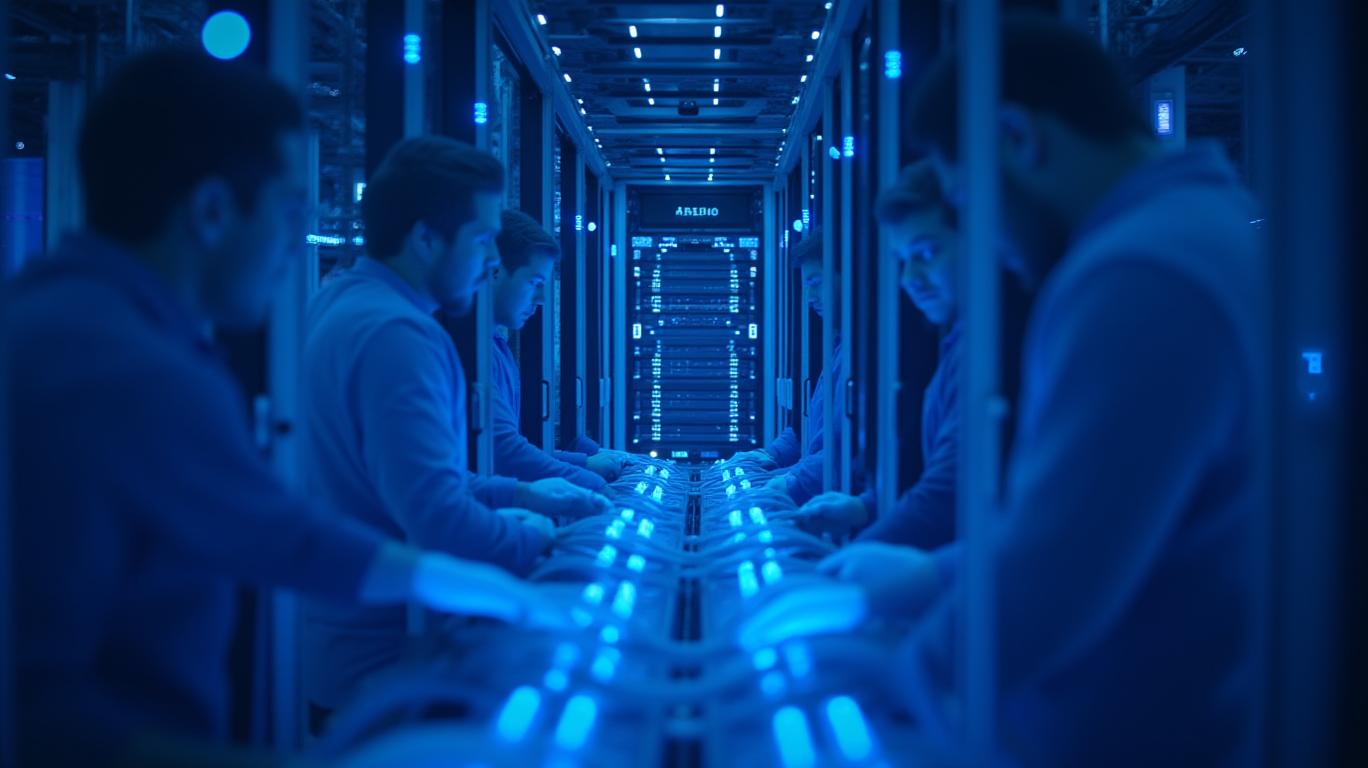The Next-Gen AI Interconnect Revolution: Why Avicena’s MicroLED Breakthrough is the Scalability Play of the Decade
The AI boom is hitting a wall. Datacenters powering generative AI, autonomous systems, and advanced analytics are buckling under unsustainable energy costs and interconnect bottlenecks. Traditional copper links and laser-based optics struggle to keep pace with the exponential data demands of AI workloads, creating a $50+ billion market opportunity for next-gen solutions. Enter Avicena, a Silicon Valley startup that just secured $65 million in Series B funding—led by Tiger Global and SK hynix—to commercialize its game-changing microLED optical interconnects. This is not just another tech upgrade; it’s the infrastructure breakthrough the AI era has been waiting for.
The Interconnect Crisis: Why Copper and Lasers Are Failing
Datacenters today are energy guzzlers. 30% of their power consumption goes to interconnects—the wiring that moves data between GPUs, CPUs, and memory. Copper cables, despite their ubiquity, suffer from latency spikes beyond 1 meter and energy inefficiency at scale (up to 20 pJ/bit). Laser-based silicon photonics offers modest improvements but still lags at 3–5 pJ/bit, while requiring complex manufacturing and short reach (100 meters max). As AI models grow to hundreds of terabytes and GPU clusters sprawl across racks, these limitations are becoming existential.

Avicena’s LightBundle™: The 1 pJ/bit Revolution
Avicena’s LightBundle™ platform shatters these constraints with a radical redesign:
- Bandwidth Density: >1 Tbps/mm shoreline, enabling 1.6 Tbps in a single rack unit (1 RU).
- Energy Efficiency: <1 pJ/bit—5x better than silicon photonics and orders of magnitude superior to copper.
- Reach: 10–100 meters, breaking free from the 1-meter copper limit. This allows GPU clusters to span racks seamlessly.
The secret lies in gallium nitride (GaN) microLEDs and silicon photodetectors. Operating at 425–430 nm blue light wavelengths, Avicena’s system leverages silicon’s natural absorption properties, eliminating the need for costly germanium doping. This simplifies manufacturing and slashes costs, while enabling 2D array scalability—a 20x improvement over linear “beachfront” architectures.
Why the Series B Funding Matters: Tiger Global’s Stamp of Approval
The $65 million Series B—backed by Tiger Global, SK hynix, and Lam Research, among others—is no mere financial boost. It’s a vote of confidence in Avicena’s path to commercialization:
- Manufacturing Muscle: TSMC is adapting its CMOS image sensor processes to mass-produce photodetectors at gigahertz speeds.
- Supply Chain Security: Osram’s optimized microLEDs ensure scalability, while Avicena’s 2022 acquisition of a $200M GaN fab secures foundry independence.
- Market Traction: The tech is already being tested in AI clusters, with co-packaged optics (CPO) and disaggregated memory fabrics on track for 2026–2028 deployment.
The Investment Case: Dominance in a $50B+ Market
The AI interconnect market is primed for disruption. By 2030, hyperscalers like Google and Microsoft will spend $60 billion annually on datacenter infrastructure upgrades to meet sustainability mandates and AI compute needs. Avicena’s LightBundle™ is uniquely positioned to capture this:
1. Technical Supremacy: No competitor matches its 1 pJ/bit efficiency or 10-meter reach.
2. Strategic Partnerships: SK hynix’s memory expertise and TSMC’s foundry scale ensure vertical integration dominance.
3. Defensible IP: Patents on GaN microLED arrays and 2D optical arrays create high entry barriers.
Risks? Yes—but the Upside is Exponential
Skeptics will point to manufacturing risks and competition from traditional photonics. But Avicena’s partnerships and oversubscribed funding round (raising 2x its initial target) suggest institutional investors see these risks as manageable. The real risk is missing the AI interconnect inflection point—a transition as pivotal as the shift from copper to fiber decades ago.
Conclusion: Act Now or Be Left in the Dust
The writing is on the wall: AI cannot scale without optical interconnects. Avicena’s LightBundle™ isn’t just an upgrade—it’s the infrastructure foundation for the next generation of AI superclusters. With $65M in the bank and a roadmap to mass production, this is the moment to bet on a company poised to redefine datacenter economics.
The AI boom won’t wait. Neither should you.

Comments
No comments yet